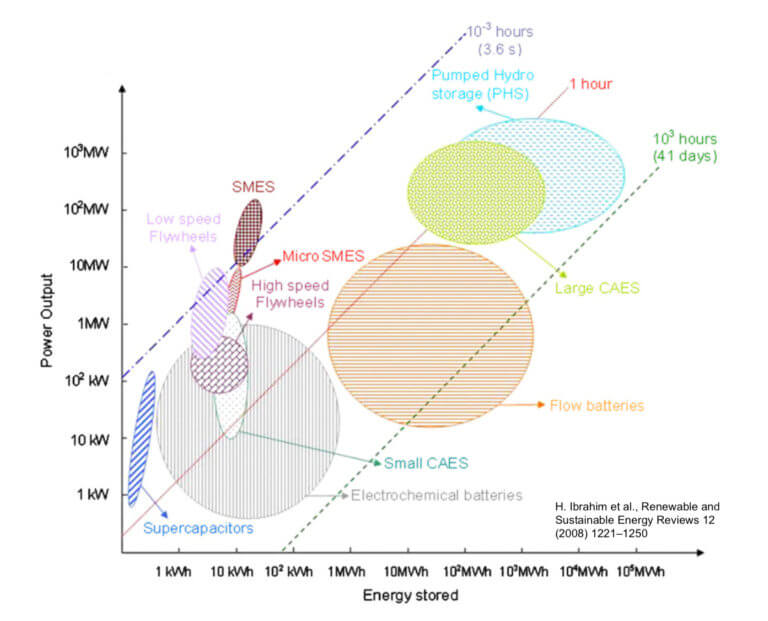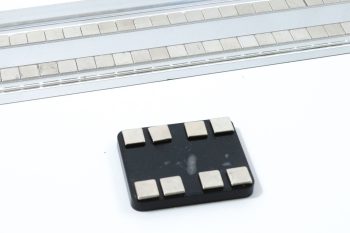Can we store energy using Superconductors?
Yes. There are two superconducting properties that can be used to store energy: zero electrical resistance (no energy loss!) and Quantum levitation (friction-less motion).
Magnetic Energy Storage (SMES)
Storing energy by driving currents inside a superconductor might be the most straight forward approach – just take a long closed-loop superconducting coil and pass as much current as you can in it. As long as the superconductor is cold and remains superconducting the current will continue to circulate and energy is stored.
The (magnetic) energy stored inside a coil comes from the magnetic field inside the cylinder. The energy of a magnetic field is proportional to B2 , hence the total energy goes like B2 x Volume. Using the magnetic field inside a coil, we get:

R is the coil radius, N the number of turns and I is the current being driven in the coil.
f is a geometrical factor relating to the shape of the coil.
This means that in order to store as much energy as possible we need to increase the currents to the maximum or use superconductors with the highest critical currents at temperature as low as possible (the critical current increase as we lower the temperature).
In order to demonstrate Superconductor Magnetic Energy Storage (SMES) is the classroom we can take a Quantum Levitator and induce currents in it. These currents persist as long as it remains cold. We can use a regular compass to verify their existence. Alternatively we can map these currents by measuring the local magnetic field on-top of the levitator. We can do this using a standard magnetic field probe (e.g. this).
Flywheel Energy Storage
Quantum Levitation allows a superconductor to move freely without friction in a homogenous magnetic field. An object rotating at a certain speed has the kinetic energy of:

I is a rotation inertia (the equivalent of the mass of an object during linear movement) and 𝜔 is the angular velocity. The rotation inertia of a cylinder is –

where M is the mass and R is the radius of the cylinder.
One can design a Quantum Levitation bearing that will allow a large mass to rotate freely, in vacuum, without energy loss. The advantage of such a device lies in its simplicity and durability. Unlike other technologies you can quickly extract large amounts of energy from the flywheel without degrading it (unlike batteries, etc.). A comparison with other storage techniques is shown below and discussed in detail here and here.

You can demonstrate flywheel action in class using circular magnets and our Quantum Levitator:
Class Activities / Projects
- Create an energy storage device using Quantum Levitation. Calculate the amount of energy you just stored.
- Calculate the amount of energy that can be stored in a similar size (to the flywheel) superconductor solenoid. Assume the following superconducting tape properties:
– tape dimension: 12mm wide, 0.1mm thick
– Critical current at 77K (liquid nitrogen): 500A
– Minimal bending radius 3cm - Build a Quantum Levitation flywheel. Mark the rotating magnets. Using a camera track the rotation of the flywheel and plot the dissipation of the rotation energy (rotation speed vs. time).




